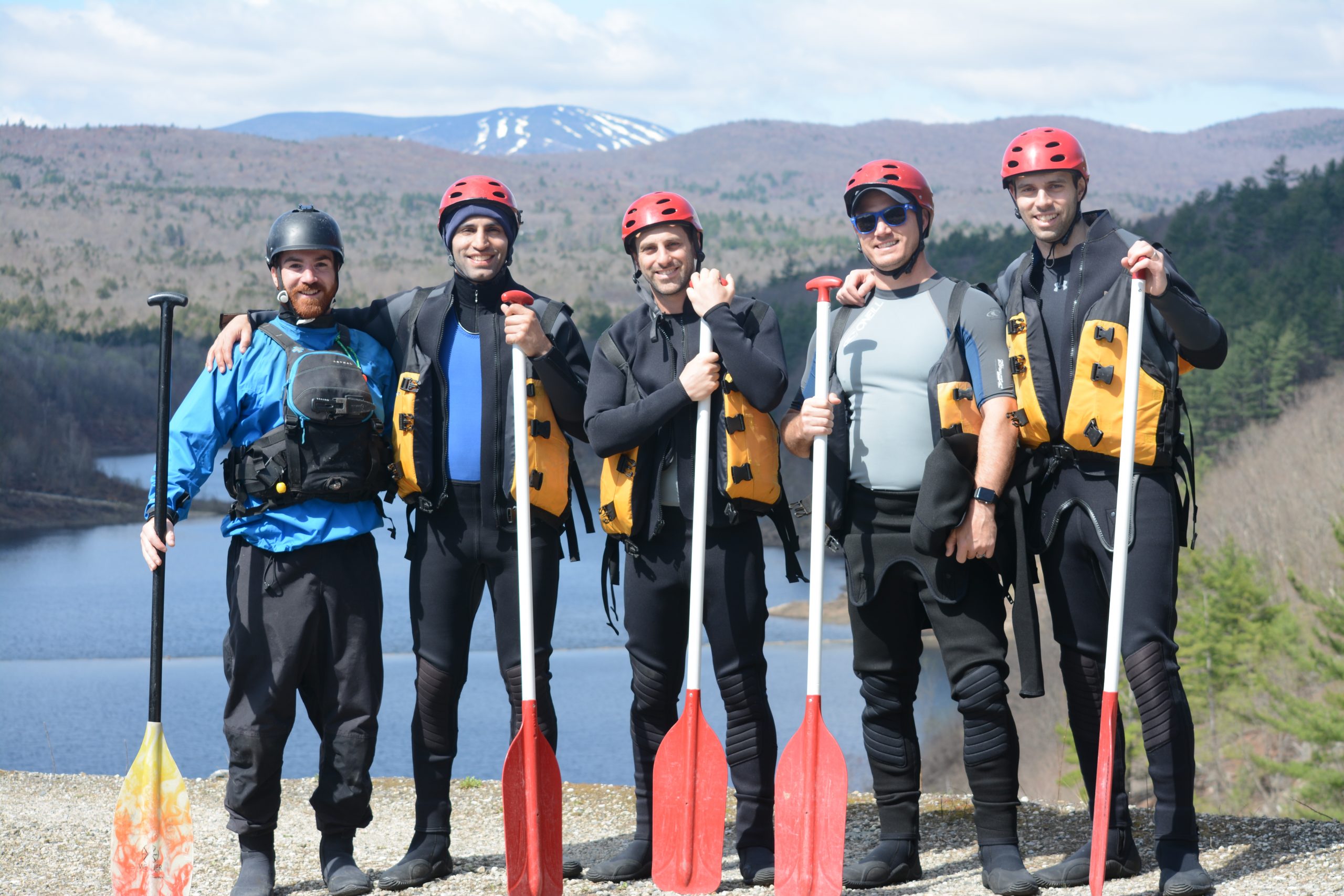Some whitewater rafting trips happen during cool weather and on rivers with cold water. In order to keep warm, rafters wear wetsuits that help insulate the body so that rafting is still enjoyable even when the air and/or water temperature are not ideal.
How Do Wetsuits Keep You Warm?
Wetsuits function similarly to warm clothes in cold weather. When you go outside on a cold day, you wear layers of clothes to keep warm. In general, several thin layers maintain heat better than one thick layer because layers trap warm air in between them and this air helps keep you warm. Multiple layers form a series of “airlocks” that help stop heat from escaping.
What Are Wetsuits Made of?
A wetsuit is made from multiple layers and, most importantly, a thick layer of synthetic rubber called neoprene. Neoprene is foam rubber with a cellular structure that has nitrogen gas bubbles trapped inside it, which make it a particularly good heat insulator. Some wetsuits (the ones used at Crab Apple Whitewater) are also lined with a thin layer of metal such as titanium to reflect your body heat back inside the wetsuit.
When you get into cold water wearing a wetsuit, some water seeps in between the neoprene suit and your skin – and the water stays there. The body quickly warms up this layer of trapped water closer to body temperature. Now there are two layers insulating you from the surrounding cold water – the layer of neoprene and a layer of warm water.
Does the Wetsuit Size Matter?
Wetsuits must fit properly so that water that seeps in will stay inside and stay warm. A poorly fitted wetsuit will allow warm water to move in and out of the suit and allow cold water to move inside the suit such that the insulating layer of warm water is never formed and maintained. Wetsuits have tight fitting sleeve cuffs and legs to keep water from rushing into the suit. The seams of a wetsuit (where the separate panels of neoprene are joined together) are held together with special waterproof tape. They are also “blind-stitched” – instead of the stitch holes going all the way through, they go only part of the way through the neoprene from the inside. That means there are no stitch holes in the outside of the neoprene to let in cold water.
Now that you know the mechanics and importance of wetsuits, book your next whitewater rafting adventure early this season and contact us today!
